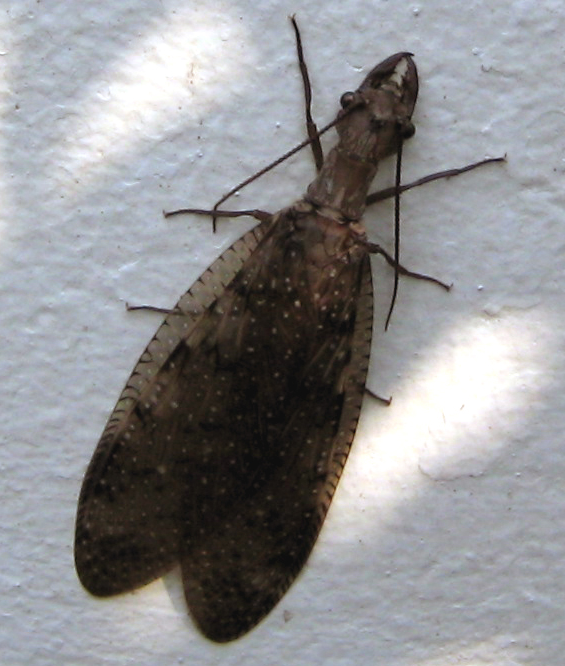In recent news you may have seen that the largest aquatic insect in the world was recently discovered in China: Scientific American. At first glance this is a rather frightening foreign creature, but did you know that it's equally intimidating cousin lives right here in the Blue Ridge Mountains?
Inevitably, when the hot summer days set in, a campfire discussion comes to life about a mysterious flying finger-eating monster patrolling the skies after sunset! Well these stories are not too far off base. Our rivers and warm creeks play host to the Eastern Dobsonfly that is a part of the Megalopteran order (Large Wing) and Corydalidae family. As aquatic macroinvertebrates they live the majority of their life under water. Even though they start out rather tiny, they grow quickly into 2"-3" ferocious predators in the underwater aquatic insect world. Locals refer to them as "hellgrammites" and seek them as prime fish bait for smallmouth bass. Each summer maturing larvae crawl out of the rivers to shelter along the water's edge where they pupate. From there they hatch into adults, flying like crashing helicopters, seemingly erratic and with abandon.
Dobsonfly, credit: Wikipedia Commons
They look intimidating with their long tusk-like mandibles and can easily getting tangled up in your hair causing panic in any honest person, but they are actually relatively harmless to humans. As a matter of fact, they don't consume food as adults! Rather, they use the large mandibles solely for mating! I still practice caution when handling them and hold them tight just behind the head like I would a crawdad.
Hellgrammite
You'll find these attracted to street lights, flying at night or resting first thing in the morning. They are primarily nocturnal and if you've ever sat with a lantern riverside in the summer you probably have had hellgrammites grace you with their presence.
Anytime I see an adult hellgrammite I also keep an eye out for the other mid-summer hatch of giants: the "Hex Fly"
Hexagenia limbata











